#harambee
Explore tagged Tumblr posts
Text

Harambee neighborhood of Milwaukee
July 2022
#photography#photographer#photographers on tumblr#urban photography#city#urban#urbex#original photographers#urban exploration#milwaukee#mke#mkewi#wisconsin#milwaukee wisconsin#harambee#harambee milwaukee#north side milwaukee#abandoned#abandoned house#urban landscape#urban decay#urbexphotography#urbanexploration#rust belt#midwest
5 notes
·
View notes
Text
By the spirit of Harambe I grant your wish
gang I need your help I have a phrase I really want to catch on and it’s calling any secret or invisible struggle you have a “fight with a gorilla” like the onion article. if they can have cinnamon roll catch on this can too. “yeah she told me about it, I had no idea, sounds like a real fight with a gorilla” “sorry man I can’t come I’ve really been fighting the gorilla lately” do you see the vision
#fun fact!#Harambee is Swahili for “all pull together” and is used for charity and fundraising style events#so a gorilla being called Harambe that lost it's own personal fight with a (hairless) gorilla [human] is actually beautiful in this context
43K notes
·
View notes
Video
Mystery Fair & Hunt 4 .Princess Stuff. von .Princess Stuff. Über Flickr: Mystery Fair & Hunt! Eventlocation: maps.secondlife.com/secondlife/Imperial%20Ar/101/124/13 Infos: harambeehunts.blogspot.com/p/mystery-fair-hunt-lms-prizes... There are so many Cute Huntitems to find & so much Stores with so many FREE GIFTs! xoxo Catherine <3
#mystery fair sl#mystery fair and hund 4#hunt#hunting sl#secondlife hunt#freebies#gifts#free secondlife#secondlife#secondlife event#secondlife animated#bento mesh#benot gift#huntitem#mystery hunt secondlife#harambee hunt#harambee event#fair secondlife#harambee fair#.princess stuff.#cloud cat#magic in secondlife#wand#zauberstab#kawaii secondlife#hunt sl#cloud cat & princess stuff#flickr
0 notes
Text
Kenya 2024-25 Kits Unveiled
International football kit news as the new Kenya 2024-25 kits have been unveiled. Kenya 2024-25 Home Shirt The new 2024-25 Kenya home jersey is red with a tonal lion graphic pattern one left side of the front. The collar is white with red trim whilst the cuffs are white with red and black trim. On the left breast is the Kenya Football Federation badge. Kenya 2024-25 Home Goalkeeper…
0 notes
Text
How To Balance (+guests) as more things that live in my head
Dick: 🎶PTSD... Anxiety... Crippling Depression, there is no question, please just kill me! Let me be with Harambee. I feel like shit every day! I'm asking you nicely, do it by drowning, under the sea!🎶
Tim: 🎶 I've no more fucks to give, my fucks have all run out! I tried to go fuck shopping, but there's no fucks on the shelf!🎶
Brucie Wayne, laying it on thick: 🎶My name is Karen! My hair is shiny. My teeth are perfect. My skirt is tiny. It barely covers my perky hiney. My name is Karen, I might not be smart! That's it.🎶
Bruce: So... who broke it? ... I'm not mad. I just want to know.
Alfred: I did. I broke-
Bruce: No, no you didn't. Tim?
Tim: Don't look at me. Look at Danny.
Danny: What? I didn't break it.
Tim: Huh. That's weird. How'd you even know it was broken?
Danny: Because it's sitting right in front of us and it's broken.
Tim: Suspicious.
Babs: If it matters - probably not - but Dick was the last one to use it.
Dick: Liar! I don't even drink that crap!
Babs: Oh, really? Then what were you doing by the coffee cart earlier?
Dick: I use the wooden stirrers to push back my cuticles; everyone knows that, Barbra!
Alfred: Ok, ok! Let’s not fight! I broke it, let me pay for it, Bruce!
Bruce: No! Who broke it??!
Danny: Bruce... Selina's been awfully quiet.
Selina: REALLY??
Bruce: Yeah! Really.
Selina: Oh, my God!
Bruce: ...
Bruce: I broke it. It burned my hand, so I punched it. I predict ten minutes from now they'll be at each other's throats with war paint on their faces and a pig head on a stick. Good. It was getting a little chummy around here.
Babs: 🎶I 👏 am ready 👏 for a 👏 nap!🎶
Dick: 🎶 I did it, I did. I jumped, I stepped, right off that cliff without a parachute. I looked over the edge and saw the view of something I could never do. And no part of me knew how, but the moment came and it had to be now, so, I did it, I did. I jumped, I stepped, right off that cliff without a parachute.🎶
Dick: Hey, you guys wanna go get some d-e-s-s-e-r-t?
Tim: Yeah, dude, I need me a t-r-e-a-t
Danny: What'chu guys talkin' about?
Babs: Yeah, why'd you guys just spell des-
Dick: No, no, no, no! Shut up!
Tim: Shh!
Dick: Shut up! Don't say it
Babs: Uh, why?
Tim: Oh, god, how do we tell you this?
Dick: Danny..can't spell
Danny: :)
Babs: ...what?
Tim: He can't spell, so when we talk about something he wants, we spell it out loud so that way he doesn't get too excited
Babs: He's a hero, and he can't handle hearing the word 'treat'?
Danny: Treat?
Dick: No treat!
Danny: Treat?!
Dick: No treat!
Danny: Treat?!?
Dick: No treat!
Danny: Aw...
Babs: Okay, what is happening?
Dick: We told you! He gets excited when he hears the word t-r-e-a-t!
Danny: What'chu talkin' about?
Dick: Taxes.
Danny: Aw, shucks
Babs: So, what, you guys just treat him like a toddler?
Danny: Treat?
Tim: No treat!
Danny: Treat?!
Tim: No treat!!
Danny: Treat?!?
Tim: No treat!!!
Danny: Aw.....
Tim: Dude, you gotta spell if you're talking about f-o-o-d!
Babs: Okay, so, are we getting an s..n-a-c-k?
Danny: Snack?!
Tim: Oh, c'mon!
Dick: Dude, really?
Babs: Come on, I spelled it!
Tim: He knows how to spell 'snack'!
Babs: So he can spell 'snack', but he can't spell 'treat'?!
Danny: Treat?
Babs: No treat!!
Danny: Treat?!
Babs: No treat!!!
Danny: Treat?!?
Babs: No treat!!!!
Danny: God damn it!
Dick: Okay, he's getting fussy; it's time for an n-a-p
Danny: Yeah.. :D
Babs: What does n-a-p spell?
Danny: Party
Dick: LOOK! I'm a teenage girl, I'd rather be anywhere than here! I'm all about long sullen silences, followed by mean comments, followed by more silence! So what's it gonna be: long sullen silence or mean comment? Go on, take your pick.
Tim: ...You got me in a box here.
Dick: AH-HAA!
Dick/Bruce: 🎶Cut my life into pieces!🎶
Danny/Tim: 🎶This is my chocolate bar!🎶
Danny, upon first glance of Wayne Manor: This house is a fucking Nightmare.
Dick: It's Muffin Time!
Danny: Actually, it's 12:30
Dick: Somebody kill me!
Danny: I can't believe giraffes exist but unicorns don't. What's more believable? A house with a horn or a leopard moose camel with a 40 foot neck?
Tim: That's why I switched to caffeine patches. You can stay awake for days with no side effects
Danny: ...
Tim: AHHHH!!!
Danny: January, February, March, April, May, June, July, 🎶Jason Derulo🎶
Child!Dick: ...What if I fall?
Mary Grayson: Oh, but what if you fly?
Danny: No capes! *slap*
Danny: Behold! The spee-i-der
Danny: Objection! Nu uh
Bruce: The fuck you mean 'nu uh'?!
#How To Balance Your Daytime And Nighttime Activities So That You Don't Burn Yourself Out More Than You Already Have#shenanigans
44 notes
·
View notes
Text

◜🕯️𓂃 Happy Kwanzaa! ‧ 🌽◞
⁺ ◍ . ⁺ ☆ ⁺ . ◍ ⁺
Early Habari Gani to my lovely African American followers! [this post is a day early] I hope each day brings you the best wishes and a joyful and prosperous new year! As a celebrant of Kwanzaa, id love to teach you guys about it too!
⁺ ◍ . ⁺ ☆ ⁺ . ◍ ⁺
★﹒┊How did Kwanzaa form? ⁔⁔
In 1965, a white police officer pulled over two African American men in Watts, Los Angeles, sparking protest from the community. The crowd grew, leading to six days of rioting and violence, resulting in 34 deaths and over a thousand injuries, now known as the Watts Rebellion. Educator and activist Maulanga Karenga wanted to rebuild neighborhoods affected by the Watts Rebellion and encourage pride amongst the people instead! As part of his plan, he created Kwanzaa in 1966 to empower African Americans to rediscover and honor their African roots. It is assumed that kwanzaa was celebrated on the African continent but to a lesser degree
⁺ ◍ . ⁺ ☆ ⁺ . ◍ ⁺
★﹒┊What does Kwanzaa mean? ⁔⁔
Kwanzaa, meaning "first fruits" in Swahili, celebrates the harvest season, and promotes honoring the 7 principles: unity, self-determination, collective work and responsibility, cooperative economics, purpose, creativity, and faith.
⁺ ◍ . ⁺ ☆ ⁺ . ◍ ⁺
★﹒┊How is it celebrated? ⁔⁔
⧼ 🏺 ⧽ Decorations
During Kwanzaa, African heritage symbols are displayed in homes, starting with a mkeka (muh-KAY-kuh) , a traditional woven mat representing traditions like sharing and faith. The mat features meaningful items like a basket filled with fruits and vegetables to represent harvest, corn for each child within your family, and a unity cup called kikombe cha umoja (kee-KOHM-bee cha oo-MOH-jah).
⧼ 🕯️ ⧽ Candles
A big part of celebrating Kwanzaa is marked by the lighting of a new candle each night. An adult pours water or juice from the unity cup onto the ground [to remember family ancestors], which is then passed to each family member while they chant harambee (Swahili for "let’s pull together" and pronounced hah-RAHM-beh) seven times while they sip from the cup. The kinara (kee-NAH-ruh) holds seven candles: one black, three red, and three green, representing unity, the past, and the future. Celebrants light a special candle each day, reflecting on the other six principles of Kwanzaa, and on the first night, celebrants light the black unity candle.
⧼ 🍍 ⧽ Food
Throughout the days of Kwanzaa, there are many celebratory dishes that can be made! Often times, the dishes are made from recipes that have been passed down from generation to generation which regularly are rooted in african culture like peanut soup or shrimp gumbo, topped off with tasty desserts like fried bananas, sweet potato pie, and coconut sweets. The big celebration is on December 31, when family and friends gather for a feast called karamu (kuh-RAH-moo), where we play music, dance, and singing. The last day is quieter, with people focusing on their future success and personal growth.
⁺ ◍ . ⁺ ☆ ⁺ . ◍ ⁺
★﹒┊Kwanzaa Fun ⁔⁔
Before finishing up, i would like to give you guys some Kwanzaa themed worksheets !
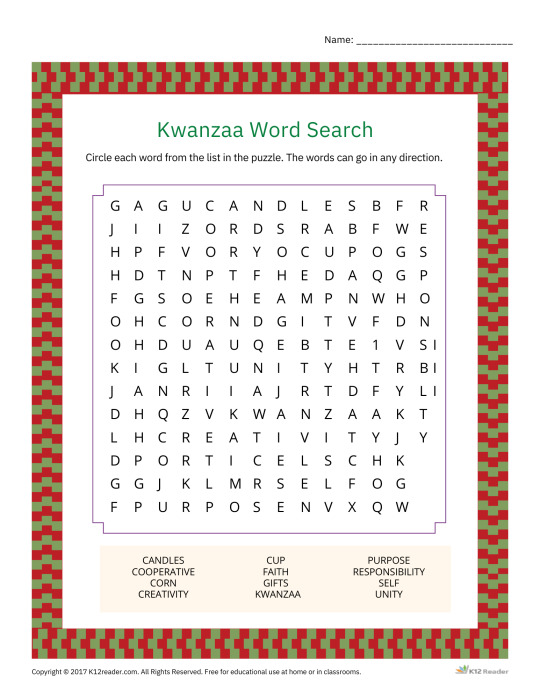
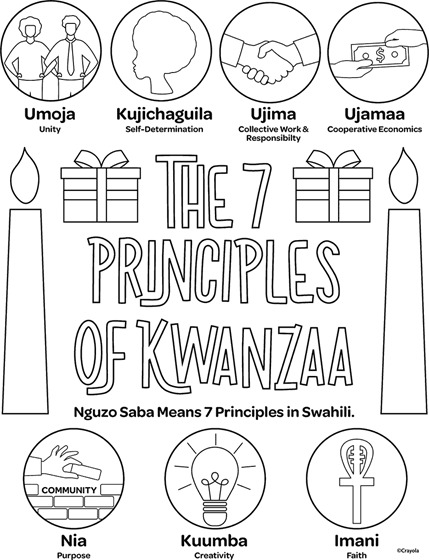
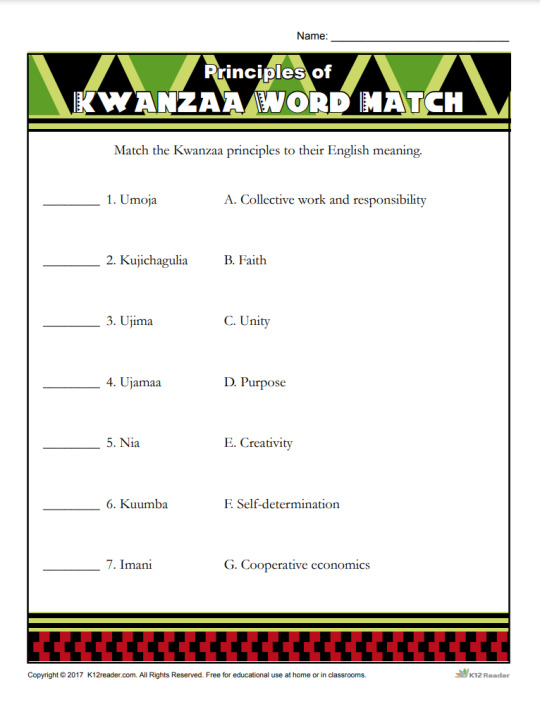
⁺ ◍ . ⁺ ☆ ⁺ . ◍ ⁺
18+ blogs // DD!LG, AB!DL and variants [even "SFW"] // 27 and older // DNI
Fact OTD: Kwanzaa has spread from the U.S. to other areas of the world, and is celebrated among African-Canadians, for example.


#✩⸜⸜babi posts 💫#anti endo#kwanzaa#winter agere#age regression#pet regression#age dreaming#agere#petre#agedre#babyre#therian#alterhuman#age regressor#sfw age regressor#sfw age regression#agere community#age regression community#autistic agere#agere blog#age regression blog#agere cg#babycore#sfw babyre#sfw toddlerre
27 notes
·
View notes
Text

Elaine Brown (March 2, 1943) was Chairwoman of the Black Panther Party. Since the 1970s she has been active in prison and education reform and juvenile justice.
Born in North Philadelphia, Pennsylvania, she studied ballet and classical piano. She entered Temple University but left for Los Angeles before the end of her first year.
She began giving piano lessons in a Watts housing project. She began writing for the radical Black Congress Newspaper, Harambee. Her first direct exposure to the Black Panther Party came through local appeals for the Huey Newton Legal Defense Fund. She attended her first Black Panther party meeting.
As a member of the Los Angeles chapter of the Black Panther Party, she helped establish the party’s first Free Breakfast for Children program. She became editor of the party paper, The Black Panther, and was elected the first female member of the Panther Central Committee. She made her first run for Oakland City Council in 1973, with Bobby Seale’s mayoral bid. Both won solid support of a Black Oakland population, expanding the Panther constituency.
Newton elevated her to the position of chairwoman. She solidified her position as leader of the male-dominated party and worked to redefine the Panthers’ revolutionary program to include the aspirations of Black women.
In 1975 she waged her second campaign for city council, this time receiving the endorsement of most of the local Democratic leaders, the United Farm Workers, and the Teamsters union. After Newton’s return and an increasing hostility within the party towards its female leadership, she left the party and Oakland.
She is the author of A Taste of Power and The Condemnation of Little B and is writing a biography of Jamil Al-Amin. She recorded two albums with Horace Tapscott and the Pan Afrikan Peoples Arkestra, Seize the Time, and Elaine Brown. She established Field of Flowers, a nonprofit organization. She co-founded two other organizations, Mothers Advocating Juvenile Justice and the National Alliance for Radical Prison Reform. She announced her candidacy for the Green Party nomination for POTUS. #africanhistory365 #africanexcellence #womenshistorymonth
10 notes
·
View notes
Text
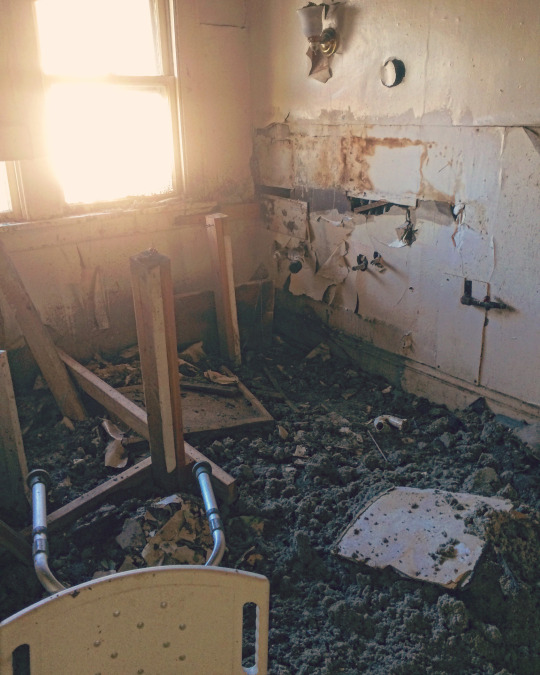

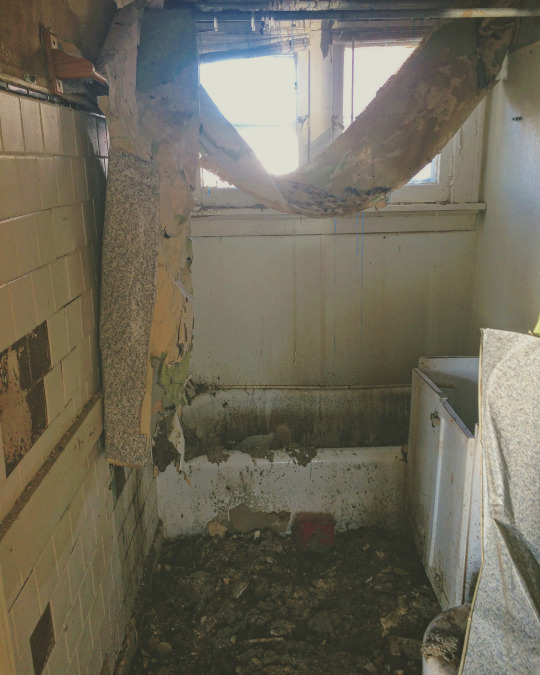


Harambee neighborhood of Milwaukee
November 2018
#photography#photographer#photographers on tumblr#urban photography#city#urban#urbex#original photographers#urbanexploration#urban exploration#urban decay#abandoned#decay#harambee#harambee milwaukee#north side milwaukee#milwaukee#MKE#MKE WI#wisconsin#milwaukee wisconsin#decrepit#dilapidated
6 notes
·
View notes
Text


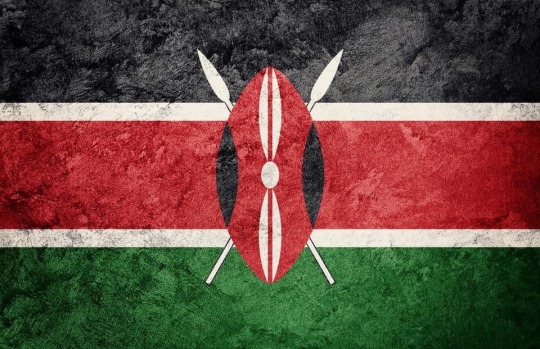
JOMO KENYATTA
Jomo Kenyatta, a pivotal figure in Kenya's history, is renowned as the father of the nation and played a crucial role in the country's struggle for independence from British colonial rule. His life and legacy offer a complex and multifaceted view of Kenya's journey towards self-determination.
Early Life and Education
Jomo Kenyatta was born in the early 1890s in British East Africa, now Kenya. Originally named Kamau Ngengi, he belonged to the Kikuyu ethnic group. His early life in the Kikuyuland gave him deep insights into the customs and traditions of his people, which later influenced his political views and actions.
Kenyatta's education began in mission schools, where he was exposed to Western education and Christianity. His thirst for knowledge led him to travel to England in 1929. There, he studied at the London School of Economics and interacted with various anti-colonial activists. This period was crucial in shaping his political ideologies.
Political Awakening and Mau Mau Uprising
Kenyatta's political journey was deeply rooted in his desire to fight for the rights of the indigenous people against colonial exploitation. After returning to Kenya, he became actively involved in the Kikuyu Central Association (KCA), advocating for the return of land taken by the British.
The 1950s marked a critical phase in Kenyatta's life with the Mau Mau uprising, a violent struggle against British colonial rule. Kenyatta's exact role in the uprising has been a subject of debate. While some believe he was a central figure, others view him as a moderate who sought to distance himself from the violence.
Road to Independence and Presidency
In 1963, Kenya achieved independence, and Kenyatta became its first Prime Minister and later its first President in 1964. His presidency was characterized by efforts to unite the diverse ethnic groups under the motto "Harambee," meaning "pulling together." Kenyatta's leadership focused on nation-building, economic development, and maintaining a balance between preserving African traditions and embracing modernity.
Legacy and Controversies
Kenyatta's legacy is a blend of revered nation-building efforts and criticisms over authoritarian tendencies. His land reform policies and promotion of education are widely lauded, but his regime also faced accusations of corruption, nepotism, and suppression of opposition.
Additional Readings:
1. https://en.wikipedia.org/wiki/Jomo_Kenyatta
2. https://artsandculture.google.com/story/jomo-kenyatta-light-of-kenya-mohamed-amin-foundation/dwVRKZUHM-vnAg?hl=en
19 notes
·
View notes
Text
Black History month (Canada edition)
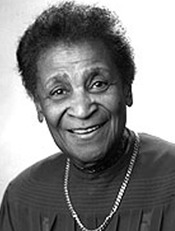
Carrie Best
The following are some of Carrie Best’s most important achievements:
Member of the Order of Canada in 1974
Awarded the Queen Elizabeth Medal in 1977
Officer of the Order of Canada in 1979
Awarded an honorary doctor of civil laws (DC.L.) from the University of King’s College, Halifax, in 1992
Founded the Kay Livingstone Visible Minority Women’s Society of Nova Scotia in 1975
Inducted into the Nova Scotia Black Wall of Fame in 1980
Received the Harry Jerome Award in 1986
Received the Harambee Membership Plaque in 1987
Received the Black Professional Women’s Group Award Certificate in 1989
Received the Minister’s Award of Excellence in Race Relations—Minister of State for Multiculturalism, in 1990
Received the Nova Scotia Human Rights Commission Award in 1991
Received the Town of New Glasgow Award for work in race relations in 1992
Received the Congress of Black Women Certificate in 1993
Carrie Best was born on March 4, 1903, in New Glasgow, Nova Scotia, to James and Georgina Ashe Prevoe.
In 1925, she married Albert T. Best and had a son, J. Calbert Best. Later, she became a foster mother to Berma, Emily, Sharon and Aubrey Marshall.
During the 1940s, Mrs. Best and her son Cal were arrested for sitting downstairs in the whites-only seats at the Roseland Theatre in New Glasgow. Consequently, the pair was charged with disturbing the peace, convicted and fined.
In 1946, Mrs. Best founded The Clarion, the first Black-owned and published Nova Scotia newspaper. In 1952, her radio show, called The Quiet Corner, went on the air. It aired for 12 years and was broadcast on four radio stations throughout Canada’s Maritime Provinces. In 1968, she was hired as a columnist for the Pictou Advocate, a newspaper based in Pictou, Nova Scotia. The column ran until 1975 under the heading of “Human Rights.”
Carrie Best died in July 2001 in New Glasgow.
2 notes
·
View notes
Video
Wandering Souls Hunt4 [.Princess Stuff.] von .Princess Stuff. Über Flickr: All infos here: harambeehunts.blogspot.com/p/wandering-souls-hunt4-hintsp... Ps: Don´t forget my New Store Location: maps.secondlife.com/secondlife/Souled%20Out/134/75/2502 Happy Hunting<3 xoxo Cat <3
#Wandering souls Hunt#Princess-Stuff Secondlife#.princes stuff.#.Princess Stuff.#Hunt Gift#Hunt#Secondlife#Hunting Secondlife#Hunting SL#Harambee Hunts#Mesh#Decor#Animesh#dollarbie#secondlife free#secondlife hunt#flickr
0 notes
Text
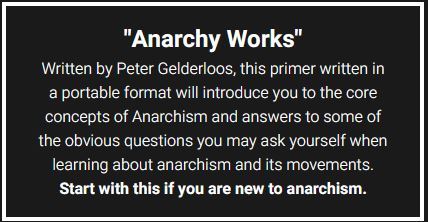
Chapter 3. Economy
What about building and organizing large, spread-out infrastructure?
Many Western history books assert that centralized government arose out of the need to build and maintain large infrastructure projects, especially irrigation. However, this assertion is based on the assumption that societies need to grow, and that they cannot choose to limit their scale to avoid centralization — an assumption that has been discredited many times over. And while large-scale irrigation projects do require some amount of coordination, centralization is only one form of coordination.
In India and East Africa, local societies built massive irrigation networks that were managed without government or centralization. In the Taita Hills region of what is now Kenya, people created complex irrigation systems that lasted hundreds of years, often until colonial agricultural practices ended them. Households shared day-to-day maintenance, each responsible for the closest section of the irrigation infrastructure, which was common property. Another custom brought people together periodically for major repairs: known as “harambee labor,” it was a form of collective, socially motivated work, similar to traditions in many other decentralized societies. The people of the Taita Hills ensured fair use through a number of social arrangements passed on by tradition, which determined how much water each household could take; those who violated these practices faced sanctions from the rest of the community.
When the British colonized the region, they assumed they knew better than the locals and set up a new irrigation system — geared, of course, to cash crop production — based on their engineering expertise and mechanical power. During the drought of the 1960s, the British system failed spectacularly and many locals returned to the indigenous irrigation system to feed themselves. According to one ethnologist, “East African irrigation works seem to have been more extensive and better managed during the precolonial era.”[48]
During the Spanish Civil War, workers in occupied factories coordinated an entire wartime economy. Anarchist organizations that had been instrumental in bringing about the revolution, namely the CNT labor union, often provided the foundations for the new society. Especially in the industrial city of Barcelona, the CNT lent the structure for running a worker-controlled economy — a task for which it had been preparing years in advance. Each factory organized itself with its own chosen technical and administrative workers; factories in the same industry in every locality organized into the Local Federation of their particular industry; all the Local Federations of a locality organized themselves into a Local Economic Council “in which all the centers of production and services were represented”; and the local Federations and Councils organized into parallel National Federations of Industry and National Economic Federations.[49]
The Barcelona congress of all Catalan collectives, on August 28, 1937, provides an example of their coordinating activities and decisions. The collectivized shoe factories needed 2 million pesetas credit. Because of a shortage of leather, they had to cut down on hours, though they still paid all their workers full time salaries. The Economic Council studied the situation, and reported that there was no surplus of shoes. The congress agreed to grant credit to purchase leather and to modernize the factories in order to lower the prices of the shoes. Later, the Economic Council outlined plans to build an aluminum factory, which was necessary for the war effort. They had located available materials, secured the cooperation of chemists, engineers, and technicians, and decided to raise the money through the collectives. The congress also decided to mitigate urban unemployment by working out a plan with agricultural workers to bring new areas into cultivation with the help of unemployed workers from the cities.
In Valencia, the CNT organized the orange industry, with 270 committees in different towns and villages for growing, purchasing, packing, and exporting; in the process, they got rid of several thousand middlemen. In Laredo, the fishing industry was collectivized — workers expropriated the ships, cut out the middlemen who took all the profit, and used those profits to improve the ships and other equipment or to pay themselves. Catalunya’s textile industry employed 250,000 workers in scores of factories. During collectivization, they got rid of high-paid directors, increased their wages by 15%, reduced their hours from 60 to 40 hours per week, bought new machinery, and elected management committees.
In Catalunya, libertarian workers showed impressive results in maintaining the complex infrastructure of the industrial society they had taken over. The workers who had always been responsible for these jobs proved themselves capable of carrying on and even improving their work in the absence of bosses. “Without waiting for orders from anyone, the workers restored normal telephone service within three days [after heavy street fighting ended]... Once this crucial emergency work was finished a general membership meeting of telephone workers decided to collectivize the telephone system.”[50] The workers voted to raise the salaries of the lowest paid members. The gas, water, and electricity services were also collectivized. The collective managing water lowered rates by 50% and was still able to contribute large amounts of money to the anti-fascist militia committee. The railway workers collectivized the railroads, and where technicians in the railroads had fled, experienced workers were chosen as replacements. The replacements proved adequate despite their lack of formal schooling, because they had learned through the experience of working together with the technicians to maintain the lines.
Municipal transportation workers in Barcelona — 6,500 out of 7,000 of whom were members of the CNT — saved considerable money by kicking out the overpaid directors and other unnecessary managers. They then reduced their hours to 40 per week, raised their wages between 60% (for the lowest income bracket) and 10% (for the highest income bracket), and helped out the entire population by lowering fares and giving free rides to schoolchildren and wounded militia members. They repaired damaged equipment and streets, cleared barricades, got the transportation system running again just five days after fighting ceased in Barcelona, and deployed a fleet of 700 trolleys — up from the 600 on the streets before the revolution — repainted red and black. As for their organization:
the various trades coordinated and organized their work into one industrial union of all the transport workers. Each section was administered by an engineer designated by the union and a worker delegated by the general membership. The delegations of the various sections coordinated operations in a given area. While the sections met separately to conduct their own specific operations, decisions affecting the workers in general were made at general membership meetings.
The engineers and technicians, rather than comprising an elite group, were integrated with the manual workers. “The engineer, for example, could not undertake an important project without consulting the other workers, not only because responsibilities were to be shared but also because in practical problems the manual workers acquired practical experience which technicians often lacked.” Public transportation in Barcelona achieved greater self-sufficiency too: before the revolution, 2% of maintenance supplies were made by the private company, and the rest had to be purchased or imported. Within a year after socialization, 98% of repair supplies were made in socialized shops. “The union also provided free medical services, including clinics and home nursing care, for the workers and their families.”[51]
For better or worse, the Spanish revolutionaries also experimented with Peasant Banks, Labor Banks, and Councils of Credit and Exchange. The Levant Federation of Peasant Collectives started a bank organized by the Bank Workers Union to help farmers draw from a broad pool of social resources needed for certain infrastructure- or resource-intensive types of farming. The Central Labor Bank of Barcelona moved credit from more prosperous collectives to socially useful collectives in need. Cash transactions were kept to a minimum, and credit was transferred as credit. The Labor Bank also arranged foreign exchange, and importation and purchase of raw materials. Where possible, payment was made in commodities, not in cash. The bank was not a for-profit enterprise; it charged only 1% interest to defray expenses. Diego Abad de Santillan, the anarchist economist, said in 1936: “Credit will be a social function and not a private speculation or usury... Credit will be based on the economic possibilities of society and not on interests or profit... The Council of Credit and Exchange will be like a thermometer of the products and needs of the country.”[52] In this experiment, money functioned as a symbol of social support and not as a symbol of ownership — it signified resources being transferred between unions of producers rather than investments by speculators. Within a complex industrial economy such banks make exchange and production more efficient, though they also present the risk of centralization or the reemergence of capital as a social force. Furthermore, efficient production and exchange as a value should be viewed with suspicion, at the least, by people interested in liberation.
There are a number of methods that could prevent institutions such as labor banks from facilitating the return of capitalism, though unfortunately the onslaught of totalitarianism from both the fascists and Communists deprived Spanish anarchists of the chance to develop them. These might include rotating and mixing tasks to prevent the emergence of a new managing class, developing fragmented structures that cannot be controlled at a central or national level, promoting as much decentralization and simplicity as possible, and maintaining a firm tradition that common resources and instruments of social wealth are never for sale.
But as long as money is a central fact of human existence, myriad human activities are reduced to quantitative values and value can be massed as power, and thus alienated from the activity that created it: in other words, it can become capital. Naturally anarchists do not agree on how to strike a balance between practicality and perfection, or how deep to cut in order to root out capitalism, but studying all the possibilities, including those that might be doomed to failure or worse, can only help.
#anarchism#daily posts#communism#anti capitalist#anti capitalism#late stage capitalism#anarchy#anarchists#libraries#leftism#anarchy works
6 notes
·
View notes
Text

"Kuwa mwanamke wa Kenya ni sawa na kuwa sehemu ya picha ya kuvutia ambapo kila kipande kinasimulia hadithi. Mila zetu ni nyuzi zinazotufunga, zikifuma ukanda wa kitamaduni. Kuanzia savanna hadi ufuo wa pwani, mandhari ya Kenya sio tu. ya kustaajabisha; ni kielelezo cha uimara wetu. Familia na jamii ndio nguzo ya maisha yangu, na uchangamfu wa miunganisho yetu hauna kifani. Ndiyo, tunakumbana na changamoto, lakini kuna nguvu katika mdundo wa maisha yetu ya kila siku. Ninaota ya Kenya ambapo elimu hufungua milango kwa wote, ambapo fursa hustawi, na ambapo ari ya Harambee—kuja pamoja—inaendelea kuendeleza safari yetu ya pamoja mbele.”
- Achieng
Nairobi, Kenya 🇰🇪
.
.
.
ENGLISH TRANSLATION: "Being a Kenyan woman is like being a part of a vibrant mosaic where every piece tells a story. Our traditions are the threads that bind us, weaving a rich tapestry of culture. From the savannas to the coastal shores, Kenya's landscapes are not just breathtaking; they're a reflection of our resilience. Family and community are the pillars of my life, and the warmth of our connections is unparalleled. Yes, we face challenges, but there's a strength in the rhythm of our daily lives. I dream of a Kenya where education opens doors for all, where opportunities flourish, and where the spirit of Harambee—coming together—continues to drive our collective journey forward."
3 notes
·
View notes
Text
Someone would instantly make one of those arriving to heaven w harambee and Betty white memes
can you imagine what the dash would be like if they hadnt missed
38K notes
·
View notes
Text
Resignation as the President of the Republic of Kenya.
HARAMBEE HOUSE June 27, 2025 To the People of Kenya, After deep reflection and in acknowledgment of the growing call from millions of my fellow citizens-particularly the youth, civil society, and the custodians of our Con-stitution-I have decided to tender my resignation as the President of the Republic of Kenya. This decision does not come lightly. However, I must concede that the trust…
0 notes

